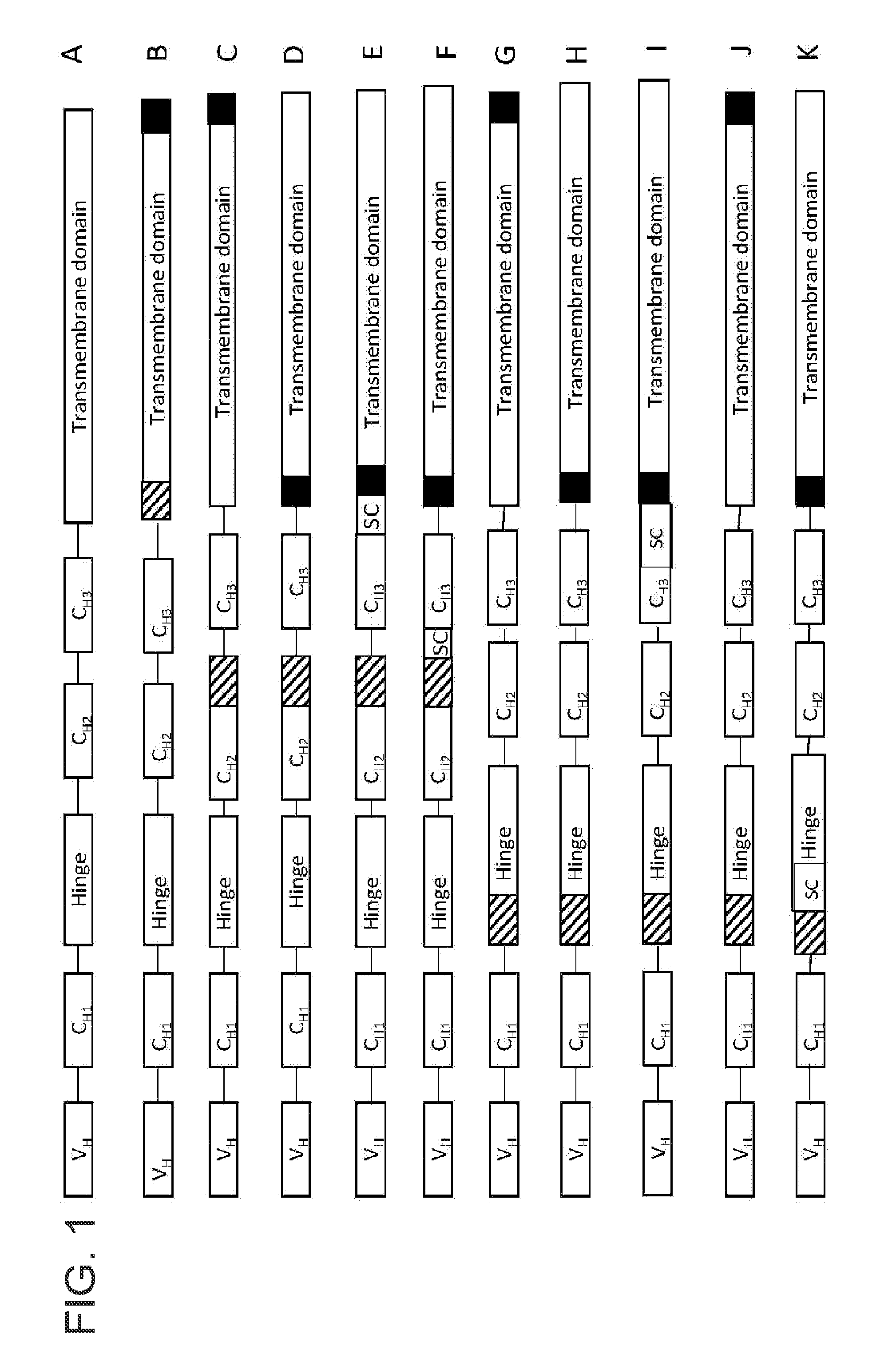Method of producing transcripts using cryptic splice sites
a cryptic splice and transcript technology, applied in the preparation of sugar derivatives, peptides, fungi, etc., can solve the problems of difficult to generate multiple expressed proteins from a single gene transcript, and the above-mentioned applications of alternative splicing cannot be utilized
- Summary
- Abstract
- Description
- Claims
- Application Information
AI Technical Summary
Benefits of technology
Problems solved by technology
Method used
Image
Examples
example 1
[0064]This example describes a method of preparing a nucleic acid sequence with a modified splice site usage profile, wherein the nucleic acid sequence encodes a portion of a chimeric antibody heavy chain polypeptide.
[0065]Nucleic acid constructs comprising a nucleic acid sequence encoding the C-terminal region of human IgG1 heavy chain polypeptide, which encodes the constant region of the antibody, were generated using the methods disclosed in U.S. Patent Application Publication No. 2009 / 0093024 A1. The H2kk peritransmembrane, transmembrane, and cytoplasmic domains were appended to the human IgG1 heavy chain constant region (not including the stop codon) to generate a chimeric immunoglobulin gene. The resulting chimeric protein encodes an IgG1 immunoglobulin molecule that is retained on the cell surface and is able to bind a proteinaceous antigen. The nucleic acid sequence encoding the aforementioned human IgG1 heavy chain (referred to as T1 in FIG. 2) is approximately 2.4 kb in le...
example 2
[0071]This example describes a method of preparing a nucleic acid sequence with a modified splice site usage profile, wherein the nucleic acid sequence encodes a portion of a chimeric antibody heavy chain polypeptide.
[0072]The T1 gene was generated as outlined in Example 1. A T3 gene was generated as illustrated in FIG. 2 by insertion of a single LoxP sequence upstream of the transmembrane domain, but in the context of a Fab constant domain. The IgG and Fab constructs differ from each other in the presence (IgG) or absence (Fab) of certain amino acids of the IgG1 constant domain. As a result of the single heterologous LoxP site in T3, multiple splice donor sites were unmasked (SD4, SD3, and SD2) and resulted in alternative splicing of the T3 gene into the various different DNA fragments (generated from transfection in HEK293 and primer based amplification in the same manner as that outlined in Example 1).
[0073]The results of this example confirm that a method of preparing a nucleic ...
example 3
[0074]This example describes a method of preparing a nucleic acid sequence with a modified splice site usage profile by generating a variety of heterologous stem-loop structures within the nucleic acid sequence.
[0075]The T2 gene was generated as outlined in Example 2. A T4 gene was generated by replacing each of the LoxP sites in T2 (SEQ ID NO: 12) with either of two other stem-loop structures (SEQ ID NO: 13 or SEQ ID NO: 14, see FIG. 2) as shown as black boxes in FIG. 2. SEQ ID NO: 12 consists of a 13 nucleic acid stem followed by an 8 nucleic acid loop followed by another 13 nucleic acid stem that is complementary to the first stem. SEQ ID NO: 13 consists of a 10 nucleic acid stem followed by a 9 nucleic acid loop followed by another 10 nucleic acid stem that is complementary to the first stem. SEQ ID NO: 14 consists of a 13 nucleic acid stem followed by an 8 nucleic acid loop followed by a 13 nucleic acid stem that is not complementary to the first stem and hence contains a fewer...
PUM
| Property | Measurement | Unit |
|---|---|---|
| Fraction | aaaaa | aaaaa |
| Fraction | aaaaa | aaaaa |
| Fraction | aaaaa | aaaaa |
Abstract
Description
Claims
Application Information
 Login to View More
Login to View More - R&D
- Intellectual Property
- Life Sciences
- Materials
- Tech Scout
- Unparalleled Data Quality
- Higher Quality Content
- 60% Fewer Hallucinations
Browse by: Latest US Patents, China's latest patents, Technical Efficacy Thesaurus, Application Domain, Technology Topic, Popular Technical Reports.
© 2025 PatSnap. All rights reserved.Legal|Privacy policy|Modern Slavery Act Transparency Statement|Sitemap|About US| Contact US: help@patsnap.com



